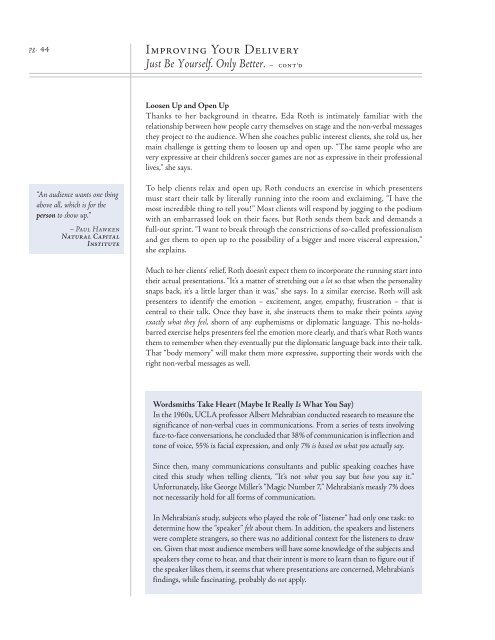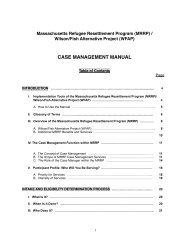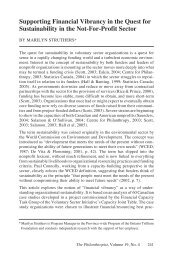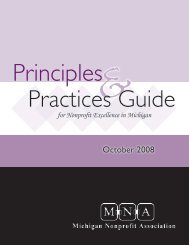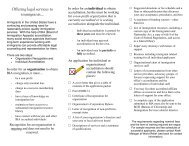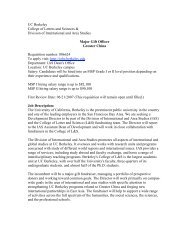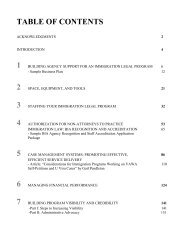Why Bad Presentations Happen to Good Causes - The Goodman ...
Why Bad Presentations Happen to Good Causes - The Goodman ...
Why Bad Presentations Happen to Good Causes - The Goodman ...
You also want an ePaper? Increase the reach of your titles
YUMPU automatically turns print PDFs into web optimized ePapers that Google loves.
pg. 44<br />
“An audience wants one thing<br />
above all, which is for the<br />
person <strong>to</strong> show up.”<br />
– Paul Hawken<br />
Natural Capital<br />
Institute<br />
Improving Your Delivery<br />
Just Be Yourself. Only Better. – cont’d<br />
Loosen Up and Open Up<br />
Thanks <strong>to</strong> her background in theatre, Eda Roth is intimately familiar with the<br />
relationship between how people carry themselves on stage and the non-verbal messages<br />
they project <strong>to</strong> the audience. When she coaches public interest clients, she <strong>to</strong>ld us, her<br />
main challenge is getting them <strong>to</strong> loosen up and open up. “<strong>The</strong> same people who are<br />
very expressive at their children’s soccer games are not as expressive in their professional<br />
lives,” she says.<br />
To help clients relax and open up, Roth conducts an exercise in which presenters<br />
must start their talk by literally running in<strong>to</strong> the room and exclaiming, “I have the<br />
most incredible thing <strong>to</strong> tell you!” Most clients will respond by jogging <strong>to</strong> the podium<br />
with an embarrassed look on their faces, but Roth sends them back and demands a<br />
full-out sprint. “I want <strong>to</strong> break through the constrictions of so-called professionalism<br />
and get them <strong>to</strong> open up <strong>to</strong> the possibility of a bigger and more visceral expression,”<br />
she explains.<br />
Much <strong>to</strong> her clients’ relief, Roth doesn’t expect them <strong>to</strong> incorporate the running start in<strong>to</strong><br />
their actual presentations. “It’s a matter of stretching out a lot so that when the personality<br />
snaps back, it’s a little larger than it was,” she says. In a similar exercise, Roth will ask<br />
presenters <strong>to</strong> identify the emotion – excitement, anger, empathy, frustration – that is<br />
central <strong>to</strong> their talk. Once they have it, she instructs them <strong>to</strong> make their points saying<br />
exactly what they feel, shorn of any euphemisms or diplomatic language. This no-holdsbarred<br />
exercise helps presenters feel the emotion more clearly, and that’s what Roth wants<br />
them <strong>to</strong> remember when they eventually put the diplomatic language back in<strong>to</strong> their talk.<br />
That “body memory” will make them more expressive, supporting their words with the<br />
right non-verbal messages as well.<br />
Wordsmiths Take Heart (Maybe It Really Is What You Say)<br />
In the 1960s, UCLA professor Albert Mehrabian conducted research <strong>to</strong> measure the<br />
significance of non-verbal cues in communications. From a series of tests involving<br />
face-<strong>to</strong>-face conversations, he concluded that 38% of communication is inflection and<br />
<strong>to</strong>ne of voice, 55% is facial expression, and only 7% is based on what you actually say.<br />
Since then, many communications consultants and public speaking coaches have<br />
cited this study when telling clients, “It’s not what you say but how you say it.”<br />
Unfortunately, like George Miller’s “Magic Number 7,” Mehrabian’s measly 7% does<br />
not necessarily hold for all forms of communication.<br />
In Mehrabian’s study, subjects who played the role of “listener” had only one task: <strong>to</strong><br />
determine how the “speaker” felt about them. In addition, the speakers and listeners<br />
were complete strangers, so there was no additional context for the listeners <strong>to</strong> draw<br />
on. Given that most audience members will have some knowledge of the subjects and<br />
speakers they come <strong>to</strong> hear, and that their intent is more <strong>to</strong> learn than <strong>to</strong> figure out if<br />
the speaker likes them, it seems that where presentations are concerned, Mehrabian’s<br />
findings, while fascinating, probably do not apply.


